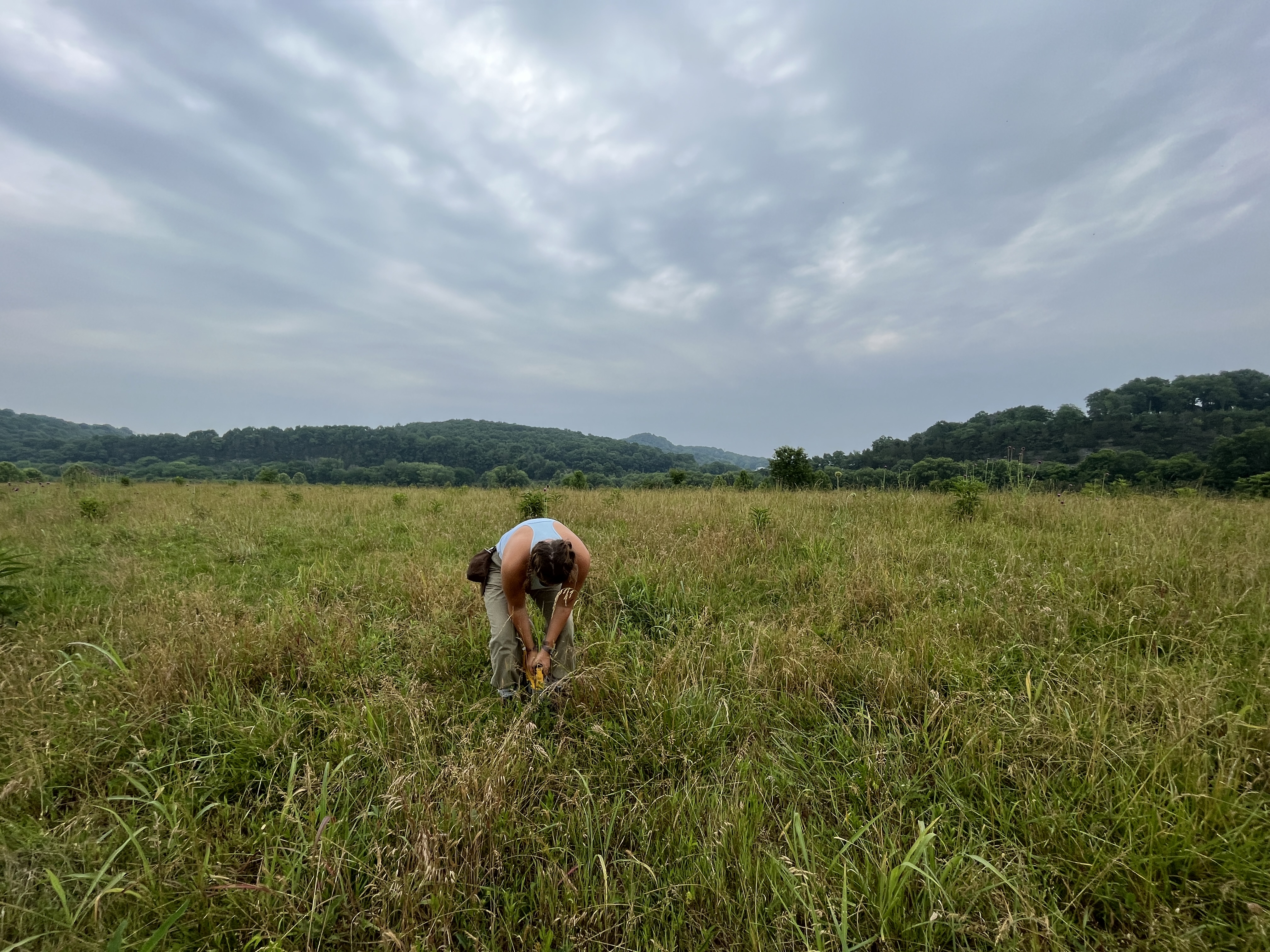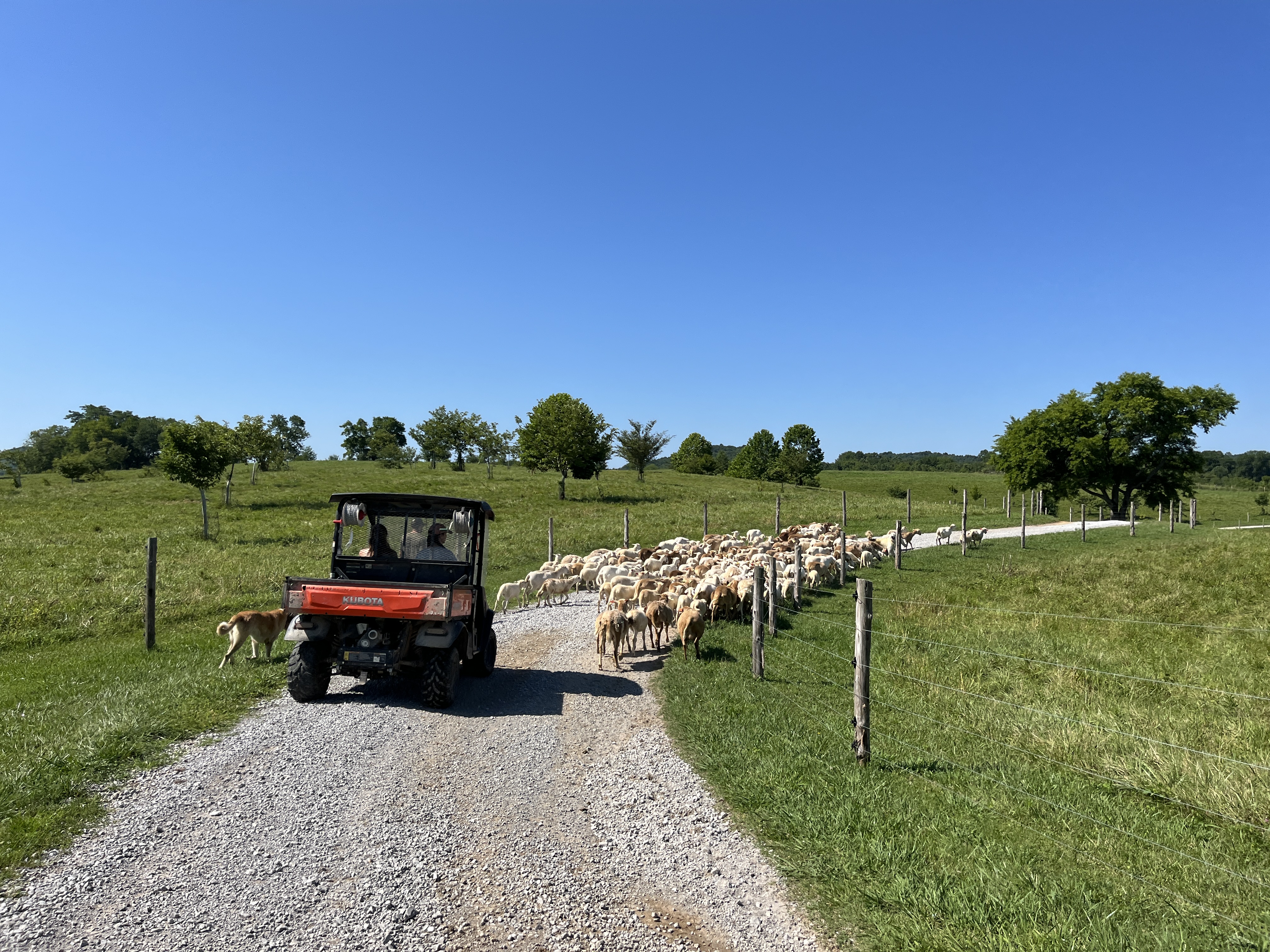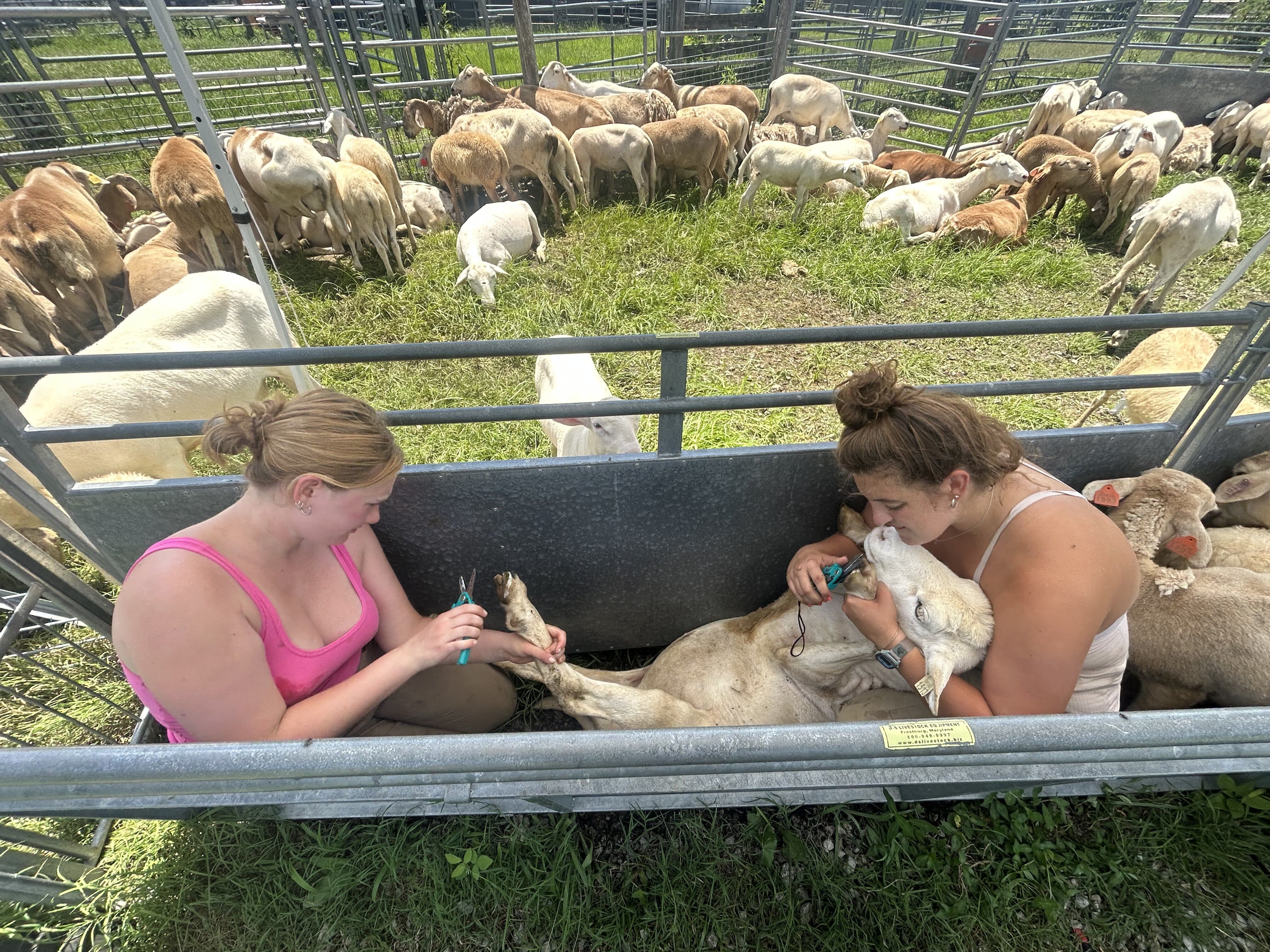
Field Reports
September 27, 2023
Soil Research and Regenerative Farming at Caney Fork Farms
College interns Hana and April share their experience doing 10 weeks of soil research — including testing a new bulk density method — chestnut tree monitoring, and regenerative farm work with Caney Fork Farms in Carthage, TN.
Written by: Hana Sparks-Woodford and April Cook
Hi everyone, our names are Hana and April, and we are both Class of 2024 environmental science majors at Skidmore College. During the 2022-2023 school year we were introduced to The Soil Inventory Project (TSIP) through a research project. Our role was to collect data for a global-scale meta-analysis exploring how various grazing practices influence soil organic carbon levels. Last summer, we both interned on local farms near our hometowns; Snipes Farm and Education Center in Morrisville, PA (Hana) and Stony Kill Farm Environmental Education Center in Wappingers Falls, NY (April). In our experiences as a farmer and environmental educator, respectively, we gained a passion for organic agriculture which we hoped to explore further with TSIP summer research.

April (left) and Hana (right) with a bulk density sample. Photo by Dylan Fishbein, Sales & Marketing Manager at Caney Fork Farms.
This summer we interned for TSIP at Caney Fork Farms (CFF) in Carthage, Tennessee. Like TSIP, CFF values the importance of soil health: “[Caney Fork Farms’] mission to is to inspire others with living proof that regenerative, organic farming in Tennessee benefits farmers, the community, and the environment.” The farmers are committed to improving soil health and ecological processes through their work in regenerative agriculture and agroforestry. TSIP has supported this mission through soil carbon sampling, mapping, and analysis for the past five years. As the fifth year of student interns at CFF, our work will contribute to the growing soil carbon database which reflects the effects of regenerative practices over time. This ongoing research monitors carbon during the transition from conventional to regeneration practices as well as compares carbon content between properties, practices, and land cover. This summer, we spent six weeks conducting research and four weeks working directly with the livestock and vegetable teams at CFF. In addition to being trained in farming and fieldwork, we’ve also made relationships which will last a lifetime.
"Some of our greatest takeaways from soil carbon sampling are to always carry spare drill batteries, to take time to look up from the soil and appreciate the beautiful surrounding landscape, and always prepare a good playlist the night before."
In our six weeks of research, we collected soil samples on 3 properties; the CFF Main Farm, the satellite farm, Lock Seven, and a neighboring farm that does not practice holistic planned grazing. For the first 3 weeks of research, we collected soil samples for carbon and soil health analysis. We explored every corner of CFF’s property while using a push probe and TSIP Sampling kit including a rotary hammer to collect samples from 0-15 cm and 15-30 cm at over 200 locations. Some of our greatest takeaways from soil carbon sampling are to always carry spare drill batteries, to take time to look up from the soil and appreciate the beautiful surrounding landscape, and always prepare a good playlist the night before (your music will set the mood for the day).
Next, we monitored Chestnut trees physiology within CFF’s agroforestry system. We monitored over 1500 Chestnut trees two times throughout the summer. In June, when the trees began to bloom, we monitored the catkins to estimate the reproductive stage of each Chestnut tree. In August, we monitored the nut set of each tree to estimate the overall nut yield, a month prior to harvest. We also took note of the pest pressure and disease presence within each individual tree. In looking at the results from our soil carbon sampling, it will be fascinating to investigate whether the presence of Chestnut trees within the agroforestry system impact carbon content!

Moving animals for rotational grazing
For the last week of research, we used two methods to collect bulk density samples within the Main Farm, Lock 7, and the neighboring property. We conducted a comparative study on the efficiency of an AMS gas powered probe versus a new bulk density collector created by Professor Kris Covey. This method uses a rotary hammer to drive a steel tube into the soil. We tested this system to help develop a new low-cost, easily distributed bulk density system. We preferred the rotary hammer bulk density sampling because it does not require a time-intensive set-up, like the probe, leading us to use only this method for sampling the remaining properties. One highlight of our summer was conducting a bulk density sampling demonstration of both methods for CFF’s research team, when they visited the farm at the start of August.
During our summer, we gained first-hand experience with the intersection between research and farming practices within a regenerative agriculture system. We each spent two weeks on the veggie team, assisting with all aspects of vegetable production including seeding, transplanting, bed-prep, weeding, harvesting, packaging, and marketing. One of our favorite days of the summer was working the CFF farm stand at the East Nashville Farmers Market. It was fantastic interacting with customers and gaining a better understanding of the Community Supported Agriculture (CSA) program. The CSA demonstrates the importance of local farms connecting community members to the land they live on. It is clear that CFF exemplifies the principles of regenerative agriculture and fills an important role within the climate justice movement, minimizing agriculture’s massive carbon footprint.
During our two weeks working with livestock, we were responsible for monitoring cattle, sheep, and pig operations as well as managing the silvopastures. We participated in animal health monitoring, setting up electric portable fencing, and moving animals within the rotational grazing system. From our research at Skidmore, we know that rotational grazing is one of the most effective practices for improving soil carbon sequestration. It was exciting to make connections like this between the papers we read and the practices that CFF is implementing. Animal health monitoring was our favorite aspect of livestock work: we vaccinated over 100 lambs, trimmed the hooves of 75 ewes, conducted pregnancy tests on 15 cows, and treated over 40 cows for pink eye. It was a laborious and hot month, but extremely rewarding. Moving forward, our understanding of CFF land management practices which we gained from farming will help us better analyze the data we collected for TSIP.

Hana and April trimming the hooves of an ewe
It was an honor to be a part of a community so devoted to stewarding the land. To quote one of Caney Fork Farms core values, “doing the hard work that matters", seriously does matter! The seemingly inconvenient or labor-intensive practices employed on a regenerative farm, like Caney Fork Farms, have such significant positive impacts in terms of mitigating the carbon footprint associated with conventional agriculture in the United States. We will carry this lesson with us into everything we do in the future.
Sonali Lamba